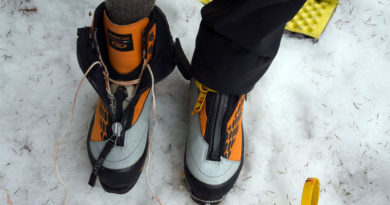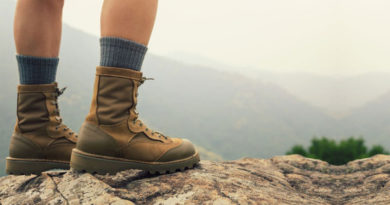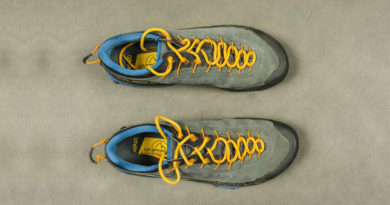How To Clean Climbing Holds For A Better Grip?
Climbing holds are artificial grips like protrusions, ledges, or texturing. They are used to form climbing routes on climbing walls or structures. Climbers use them to grab, walk on, and pull themselves upward. Climbing holds come in a range of forms, sizes, and textures. Holds are an essential piece of gear for climbing because they allow climbers to test themselves and improve their skills. The quality and cleanliness of climbing holds can have a significant impact on the overall climbing experience. Therefore, it’s critical to clean them regularly for a firmer grip and a safer climb.
Why Does Climbing Holds Need Cleaning?
Climbing holds need cleaning for a variety of reasons, including:
The Buildup of Dirt and Grime
Over time, climbing holds can become covered in dirt, sweat, oils, and other debris from climbers. This buildup can make the holds slippery and reduce the grip available to climbers.
Algae and Mold Growth
In damp environments, climbing holds can be prone to the growth of mold and algae, which can make them slippery and potentially dangerous to climb on.
Chalking Residue
Climbers often use chalk on their hands to help increase grip and absorb sweat, but this can leave a chalky residue on the holds. Over time, this buildup can reduce the effectiveness of the holds.
Contamination from other Climbers
Climbing holds can also be contaminated by other climbers who may have skin conditions, infections, or illnesses. Cleaning the holds can help prevent the spread of these contaminants.
Cleaning the holds regularly helps to remove these contaminants and ensure that the holds are safe and effective for climbing.
What Are The Tools Needed To Clean Climbing Holds?
To clean climbing holds, you will need the following tools:
Brush
A soft-bristled brush is useful for removing loose dirt and debris from the surface of the holds.
Cleaning Solution
Soap and water, vinegar and water, or a commercial climbing hold cleaning solution can be used to help remove dirt and grime from the holds.
Cloth or Sponge
A cloth or sponge is useful for wiping down the holds after they have been cleaned and rinsed.
Scrubbing Brush (Optional)
For particularly stubborn dirt and grime buildup, a scrubbing brush can be used to help loosen and remove the contaminants.
Note: Follow the manufacturer’s instructions and take the necessary safety precautions when using a commercial cleaning solution. Wear gloves and avoid inhaling fumes.
Steps To Clean Climbing Holds
Here are the general steps for cleaning climbing holds:
Remove Loose Dirt and Debris
Using a soft-bristled brush, gently remove any loose dirt and debris from the surface of the holds.
Apply Cleaning Solution
Mix your chosen cleaning solution with water according to the manufacturer’s instructions. Using a cloth or sponge, apply the cleaning solution to the holds and let it sit for a few minutes.
Scrub the Holds
Using a scrubbing brush or cloth, gently scrub the holds to remove any dirt and grime buildup. For particularly stubborn buildup, you may need to repeat the cleaning process.
Rinse the Holds
Rinse the holds thoroughly with water to remove any remaining cleaning solution and dirt.
Dry the Holds
Wipe down the holds with a dry cloth or allow them to air dry completely before using them again.
Wearing gloves and avoiding breathing cleaning solution fumes are crucial safety precautions to consider when cleaning climbing holds. Furthermore, different types of holds may require different cleaning procedures, so follow the manufacturer’s cleaning and maintenance instructions.
Cleaning Solutions For Climbing Holds
Here are some cleaning solutions that can be used to clean climbing holds:
Soap and Water
A simple solution of soap and water can be effective in removing dirt and grime from climbing holds. Use mild dish soap and warm water to create a solution, then apply it to the holds with a cloth or sponge.
Vinegar and Water
A solution of vinegar and water can help to remove algae and mold buildup from climbing holds. Mix equal parts of vinegar and water, then apply it to the holds and let it sit for a few minutes before scrubbing and rinsing.
Commercial Climbing Hold Cleaning Solution
There are commercial cleaning solutions specifically designed for cleaning climbing holds. These solutions are often more effective than soap and water or vinegar and water and can help to quickly remove dirt, grime, and chalk residue. Be sure to follow the manufacturer’s instructions when using a commercial cleaning solution.
Furthermore, after using a cleaning solution, always fully rinse the holds with water to remove any residue that may affect the grip and safety of the holds.
How To Clean Different Types Of Climbing Holds?
Different types of climbing holds require different cleaning methods. So, follow the manufacturer’s instructions for cleaning and maintenance. Here are some general guidelines for cleaning different types of climbing holds:
Polyurethane (PU)
PU holds are some of the most common types of climbing holds and are often made of durable, high-grip material. PU holds can be cleaned with soap and water or a commercial cleaning solution followed by rinsing with water. Avoid using abrasive materials or cleaning solutions that could damage the surface of the hold.
Resin
Resin holds are made of a harder, more durable material and are resistant to chalking and sweat buildup. They can be washed with soap and water or a special cleaning solution for climbing holds, then rinsed with water. Avoid using cleaning agents or materials that could scratch the hold’s surface.
Wooden
Wooden holds can be more delicate than other types of holds and may require gentler cleaning methods. Wooden holds can also be cleaned with soap and water or with vinegar and water solution, then rinsed with water. Avoid using abrasive or harsh cleaning solutions that could damage the surface of the hold.
Textured
Textured holds, such as those with a brushed finish or rough surface, can be more prone to dirt and grime buildup. You can wash textured holds with soap and water or a specialized solution, then rinse them with water. Avoid using cleaning agents or materials that could scratch the hold’s surface.
Note: Before cleaning the entire hold, examine a tiny, inconspicuous portion of the hold to check that the cleaning solution does not cause damage or discoloration.
Tips For Maintaining Clean Climbing Holds
Here are some tips for maintaining clean climbing holds:
Chalk Sparingly
Chalk can build up on holds over time and make them slippery, so it’s important to use chalk sparingly and wipe down the holds after each use.
Store Holds in a Dry Place
Storing climbing holds in a damp or humid environment can lead to mold and mildew buildup. So, it is best to store your climbing holds in a dry place when you are not using them.
Clean Regularly
Regular cleaning of climbing holds can help to maintain their grip and prolong their lifespan. Plan to clean your holds at least once every few months. If you use them frequently or if they are exposed to moisture or dirt, clean them more frequently
Use a Brush
A hold brush can help to remove loose dirt and debris from the surface of the holds after each use. A brush makes it easier to clean and prolongs the lifespan of the holds.
Protect the Holds from Damage
Avoid dropping heavy objects or applying excessive force to the holds. Heavy objects can cause cracks or chips that can impact the grip and safety of the holds.
By following these tips and cleaning your climbing holds regularly, you can help to maintain their grip and extend their lifespan.
Conclusion
Cleaning climbing holds is an important part of maintaining their grip and safety for climbing. You can clean them with soap and water, vinegar and water, or a commercial climbing hold cleaning solution. By cleaning them on a regular basis, you can eliminate dirt, grime, and chalk residue that can impair hold grip. You can maintain the grip and safety of your climbing holds by following the manufacturer’s instructions and utilizing proper cleaning methods. You can also extend the lifespan of your holds and retain their grip over time by storing them in a dry place and using a hold brush.




